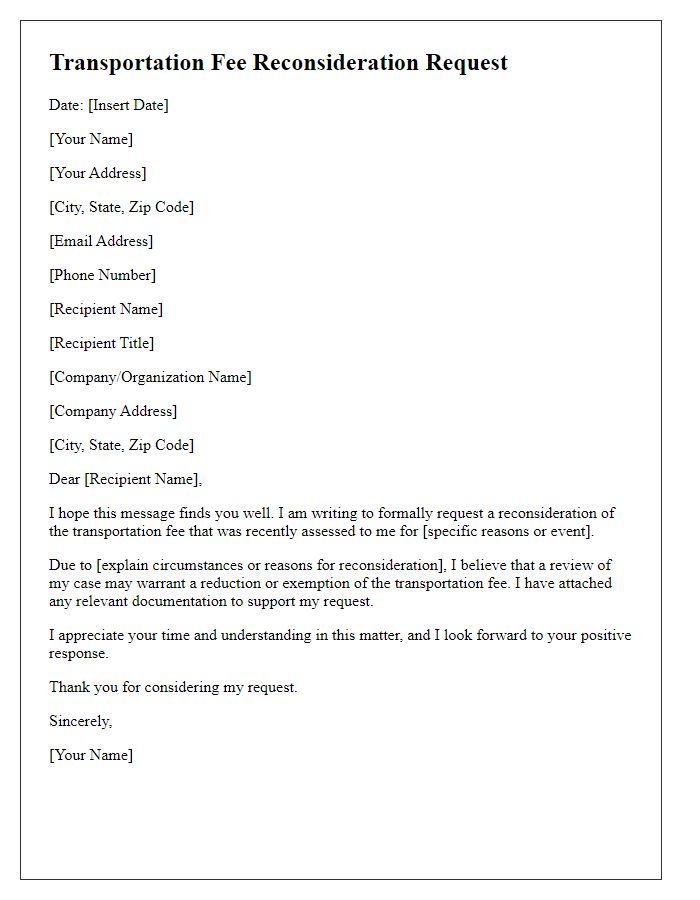Negotiating transportation service fees can feel daunting, but it's an essential step towards maximizing your budget. Understanding the key components of the negotiation process can empower you to reach a favorable agreement that caters to both parties' needs. Whether you're a small business or a large corporation, being well-prepared can lead to substantial savings and improved service quality. Join us as we dive deeper into effective strategies for negotiating transportation service fees that work for you!

Introduction and Objective
Transportation service fees can significantly impact budget management in logistics. By understanding cost structures, such as base rates per mile or flat fees for specific routes, businesses can negotiate favorable terms. Identifying key factors, like vehicle type (e.g., 18-wheeler trucks) and fuel prices (recently averaging $3.50 per gallon in the U.S.), plays a critical role in discussions. Establishing clear objectives, such as reducing overall transportation costs by 15% or securing discounts for bulk shipments, can lead to more effective negotiations with service providers. Building a solid relationship based on transparency and trust may also enhance collaboration for future transportation needs.
Current Partnership Overview
Current partnerships between transportation service providers and businesses often involve negotiations focused on service fees related to logistics and freight management. These partnerships typically encompass multiple aspects, including standardized shipping rates, volume discounts based on shipment frequency (e.g., monthly, quarterly), and specific geographic zones served, such as urban vs. rural delivery regions. Additionally, factors like fuel surcharges, accessorial fees for special handling or expedited deliveries, and contractual terms (often spanning one to three years) play crucial roles in defining cost structures. Successful negotiation can lead to mutually beneficial agreements that enhance service reliability, improve cost efficiency, and foster long-term collaboration, ultimately benefiting both parties involved.
Cost Analysis and Market Comparison
Transportation service fees significantly impact logistics operations and budget allocations for businesses. Analyzing cost structures reveals that average freight charges range from $1.50 to $3.00 per mile, depending on factors such as weight, distance, and service type. Market comparisons indicate that regional carriers often offer competitive rates, especially in high-demand areas like the Midwest (Illinois, Indiana). Key factors influencing these fees include fuel surcharges, accessorial fees for services such as lift gates, and seasonal demand fluctuations, often peaking during holidays. Furthermore, negotiating long-term contracts can yield discounts of 10-20%, particularly when transportation volume reaches levels above 1,000 shipments per month. Understanding these dynamics can lead to more informed negotiations, potentially lowering overall transportation costs while ensuring service reliability.
Value Proposition and Benefits
Transportation service fee negotiations often hinge on presenting a strong value proposition. Highlighting cost-effectiveness, reliability, and flexibility can influence decision-making. For example, emphasizing a robust logistics network, established in 2021, that ensures timely deliveries across major cities like New York and Los Angeles can be persuasive. Detailing reduced transit times, achieved through strategic partnerships with local carriers, emphasizes efficiency. Additionally, providing data on customer satisfaction rates, such as 95% positive feedback from clients over the past year, underscores commitment to service quality. Access to advanced tracking technology that enhances transparency throughout the shipping process can also be a key benefit, reassuring clients of the safety and dependability of their shipments.
Requested Adjustment Proposal
Transportation service fees often require negotiation based on factors like distance, fuel prices, and delivery timelines. Businesses frequently aim to optimize logistics costs that can affect profitability. An analysis of routes, such as delivery to urban areas like New York City versus rural regions, can significantly influence pricing. Additionally, the evaluation of freight options--such as full truckload versus less-than-truckload--can lead to substantial savings. Seasonal fluctuations, such as peak shipping periods during holidays (like Christmas) or events (like back-to-school sales), may also necessitate revisiting and adjusting contracts with transportation providers to achieve more favorable terms.













Comments